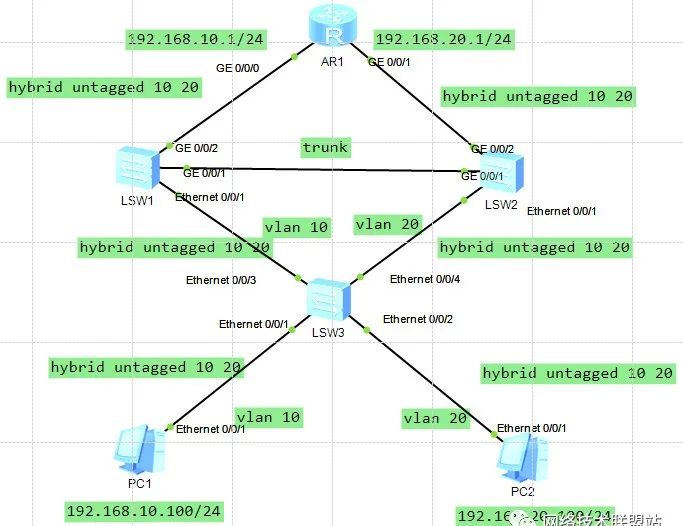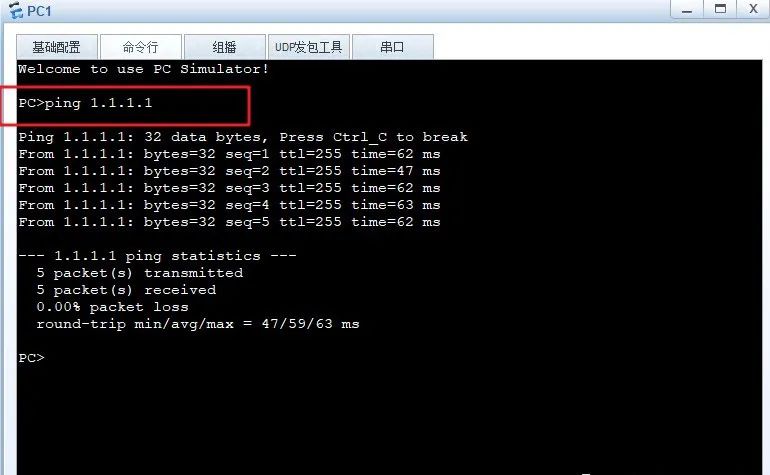- 1自学HarmonyOS应用开发(75)- 显示拍摄结果_createpixelmap
- 2《学成在线》微服务实战项目实操笔记系列(P1~P83)【上】_学成在线 项目 笔记
- 3【imx6ull】视频监控项目(usb摄像头+ffmepeg)
- 4【YOLO小项目】YOLO 热力图_yolo中热力图中的颜色
- 52分钟教你配置好LoRA模型训练器—Kohya_kohya 安装教程
- 6【学习笔记】pandas提取excel数据形成三元组,采用neo4j数据库构建小型知识图谱_from invoice_data.datatoneo4jclass.datatoneo4jclas
- 7Vivado-ECO修改网表进行加速debug_dcp 网表
- 8SprngBoot源码解析_bootstrapregistryinitializer
- 92023.05.28十四届蓝桥杯青少组国赛Python_蓝桥杯青少十四届答案python
- 10linux的含义,指令本质,shell介绍
什么是MSTP?有哪些专业术语,附华为MSTP实验配置
赞
踩
1概述
mstp是多实例生成树,是IEEE802.1s中定义的生成树协议,通过生成多个生成树,来解决以太网环路问题。
作用
在以太网中部署MSTP协议后可实现如下功能:
形成多棵无环路的树,解决广播风暴并实现冗余备份。
多棵生成树在VLAN间实现负载均衡,不同VLAN的流量按照不同的路径转发。
MSTP基本概念
MST域(MST Region)
都启动了MSTP。
具有相同的域名。
具有相同的VLAN到生成树实例映射配置。
具有相同的MSTP修订级别配置。
一个局域网可以存在多个MST域,各MST域之间在物理上直接或间接相连。用户可以通过MSTP配置命令把多台交换设备划分在同一个MST域内。
VLAN映射表:
VLAN映射表是MST域的属性,它描述了VLAN和MSTI之间的映射关系。
CST
公共生成树CST(Common Spanning Tree)是连接交换网络内所有MST域的一棵生成树。
如果把每个MST域看作是一个节点,CST就是这些节点通过STP或RSTP协议计算生成的一棵生成树。
IST
内部生成树IST(Internal Spanning Tree)是各MST域内的一棵生成树。
IST是一个特殊的MSTI,MSTI的ID为0,通常称为MSTI0。
IST是CIST在MST域中的一个片段。
SST
运行STP或RSTP的交换设备只能属于一个生成树。
MST域中只有一个交换设备,这个交换设备构成单生成树。
CIST
公共和内部生成树CIST(Common and Internal Spanning Tree)是通过STP或RSTP协议计算生成的,连接一个交换网络内所有交换设备的单生成树。
域根
域根(Regional Root)分为IST域根和MSTI域根。
一个MST域内可以生成多棵生成树,每棵生成树都称为一个MSTI。MSTI域根是每个多生成树实例的树根。
总根
总根是CIST(Common and Internal Spanning Tree)的根桥。
主桥
主桥(Master Bridge)也就是IST Master,它是域内距离总根最近的交换设备。
端口角色
根端口、指定端口、Alternate端口、Backup端口和边缘端口的作用同RSTP协议中定义。
除边缘端口外,其他端口角色都参与MSTP的计算过程。
同一端口在不同的生成树实例中可以担任不同的角色。
2实验
2.1:实验目的
实现trunk链路的负载均衡
2.2:实验环境
ENSP
三台交换机
两台PC
一台路由器
2.3:实验拓扑结构图
拓补图
2.4:实验配置
2.5:实验总结





